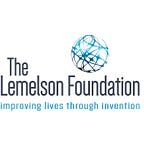Major Milestones Reached and High Hurdles Ahead
By Carol Dahl, Executive Director, The Lemelson Foundation
As The Lemelson Foundation’s 20th Anniversary year draws to a close, we are compelled to pause and take stock of all that’s transpired over the past 12 months. From major milestones reached to the high hurdles ahead, we have much to ponder as a foundation seeking to improve lives through invention.
We are also mindful of all that has occurred externally over the past year — developments far beyond our organizational walls that will profoundly influence and shape the work we do as grantmakers.
During the past year we’ve seen the world come together to define and begin confronting the grand challenges of our time. This was evident in September when the United Nations General Assembly adopted the Sustainable Development Goals (SDGs) and related 2030 Agenda for Sustainable Development. We were also profoundly moved when 195 nations at the UN Framework Convention on Climate Change adopted the Paris Agreement, the first-ever, legally binding global action plan to put the world on track to avoid dangerous climate change by limiting global warming to well below 2°C.
Our work as a foundation is centered on the importance of confronting the world’s most complex and vexing challenges. We believe that technology and invention can play a significant role in solving the big problems we face whether it’s slowing dangerous climate change, developing clean energy alternatives, ensuring equal access to a healthy life, providing clean water and sanitation, or rethinking how the world grows, shares and consumes its food.
What differentiates us is our belief that invention is an essential part of the solution set for addressing these big challenges. That’s why we work hard to document and convey the case for invention. But it is not an easy path. In developed countries these challenges are difficult enough; in the developing world context, they become exponentially more intractable. Financial and human resources are often constrained when working in the developing world, and diverse cultural contexts routinely complicate the types of invention, experimentation and business innovation required for inventors to succeed at scale.
Despite these obstacles, however, we have no choice but to push ahead. As we strive to improve the wellbeing of a growing global population while protecting our planet, new inventions will be critical to our future wellbeing. While information technology has been hugely enabling to disseminate knowledge and facilitate progress, meeting current and future challenges will also require tangible products.
To that end the Lemelson Foundation is committed to supporting what we call impact inventing and its three central tenets. First, inventions need to have positive social impact. Second they should be environmentally responsible. And finally, they need to become financially self-sustaining to ensure they will reach people with impact over time.
Over the past year we have shared a number of examples with you of what impact inventing looks like in practice — from sanitation to health, energy generation to waste reduction.
Sanergy is proving what it takes to create economic opportunity for hundreds of Kenyans by bringing hygienic sanitation to neighborhoods, removing a large volume of human waste, and doing it in an environmentally sound and cost-effective way. Imagine what it might look like if scaled to serve the 2.6 billion people globally who lack access to proper sanitation?
Kaleo is showing us how auto-injector technologies can save lives for the millions of people worldwide who will experience anaphylaxis from allergic reactions to food, medication, insect bites or other foreign substances.
SELCO’s approach to distributed solar technology is not only demonstrating that it is possible to light the lives and increase the productivity for India’s poorest citizens, but that it is possible to expand access to sustainable energy and alleviate poverty at the same time.
And Ecovative is showing the world what it takes to produce commercially critical products while maintaining an energy and environmental footprint that is exponentially better than most.
These and other partners give us reason for significant hope and optimism in the coming year. But meeting the Sustainable Development Goals and climate change mitigation targets will not be easy. Adapting to life in an era that requires wiser use of resources than ever before will demand a steady pipeline of problem solvers and inventive solutions.
To this end we are also committed to unlocking the potential of the next generation of problem solvers — inventors, who will take on the daunting challenges of today’s world, but also the challenges that will face our world tomorrow. These students and programs that support them such as the Lemelson-MIT Program, GMIN, VentureWell and the Smithsonian’s Lemelson Center are the key for ensuring that we have a robust pipeline of young inventor entrepreneurs who will drive social and economic progress that benefits all of us.
In the coming year our Foundation will continue to make our best case for the power of invention to improve lives. We will continue to share stories of progress when we see them, and raise questions when challenges and obstacles get in our way.
We look forward to supporting and expanding a growing community of partners committed to addressing problems worth solving and creating improving lives through impact inventing.
